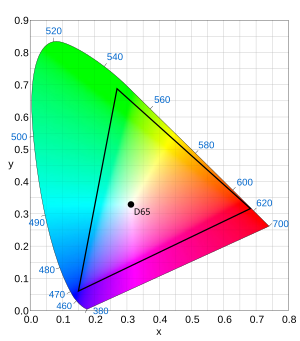
HDR-10 Test Patterns Suite UHD Blu-ray Disc by Diversified Video Solutions
4K UHD HDR-10 Calibration – A Brief Introduction
Calibrating 4K UHD video display systems is anything but simple, even for the professional, as there is no truly accurate way to calibrate them yet. Calibrating projector systems is even more challenging as they can’t produce anywhere near the required brightness, or the minimum required color gamut (DCI-P3) with any degree of ease. As for hitting REC2020, well thats a nice dream for now!
Gone are the days when all the calibration engineer had to worry about was getting a gamma of 2.2 and meeting the NTSC or REC 709 color gamut. UHD and HDR-10 requires a lot more skill now in order to correctly set up these two parameters, trying to ‘stretch’ the display devices gamut to hit at least DCI-P3 together with REC709 and creating an EOTF (Electro Optical Transfer Function) or ST2084 gamma that ‘works’ with HDR10 sources.
Ignoring the obvious 4K resolution, which is not that important (honestly), these two parameters, gamut and EOTF (gamma) are what really define the UHD performance. Their correct calibration is therefore of paramount importance, if you are to get the maximum benefit from a UHD source. Dolby Vision (and HDR10+) adds another wrinkle in that they have the ability to dynamically change the content of each scene’s brightness, contrast and color performance, so incorrect calibration can really mess up the look that the director is trying to achieve.
When working with non-HDR/UHD TVs their calibration is based on matching the TV as closely as possible to a given standard, such as REC709 with a gamma of typically 2.2. No HDR UHDTVs or projectors can match the target WCG (Wide Colour Gamut) colour space REC2020. This means the display device cannot be calibrated directly to the standard, as only a small part of the REC2020 gamut will be covered by the display, typically DCI P3. Additionally, its EOTF or gamma, is brightness based on a 10,000 nit maximum luminance standard.

REC 2020 Color Gamut

DCI-P3 Color Gamut

REC 709 Color Gamut

Image Credit – USA Canon. Typical OETF Curve Comparison
This means different displays and projectors with different peak luminance levels will use a different ‘portion’ of the full EOTF, resulting in different tone mapping. This results in the need to use highly customized OETF curves that are edited to meet the specific needs of the display/projector and screen. See post 2977 here for an example on custom OETF curves for the latest range of JVC projectors.
Calibrating fixed panel displays and projectors is not for the faint of heart in this new 4K world. Besides needing the obvious technical expertise, you will also require a suitable colorimeter and software from companies such as SpectraCal. Having procured your testing hardware and software and learnt how to use it you will also need a set of UHD test signals. This is where things become a little trickier, as there are few sources at the moment for UHD HDR-10 disc test sources.
UHD TEST MATERIAL SOURCES
There is still a limited amount of material and generators for setting up and testing 4K UHD HDR10 systems. Check these links out:
4K Discs:
- Samsung HDR10 Test Disc
- Diversified Video Solutions
- OPPO Digital – OEM Diversified Video Solutions HDR10 Test Patterns Suite UHD Blu-ray Disc
- Spears & Munsil UHD HDR Test Disc
- Spears & Munsil Ultra HD Benchmark – 2023 three disc set
- Various 4K Blu-ray discs by Sony. Access the test signals at the main menu by typing SONY (7669 Enter) on your players remote keypad.
4K Pattern Generators:
- Joe Kanes UHD Digital Video Essentials DVE V0.9 – thumb drive only
- VideoForge Pattern Generators
- DVDO AVLab TPG
- Phabrix – Qx Series
- Marshall – V-SG4K-HDI
- NTI -MONTEST-HD4K
- Murideo – FRESCO Six G
OK, so now you’ve purchased the equipment and software, its time to calibrate. Good luck!
For additional information on the UHD video format see this post.
For further information and guidance on HDR calibration see these sites:
- SpectralCal – HDR Demystified – requires sign up to download this excellent and free, easy to read e-book.
- Lightillusion
